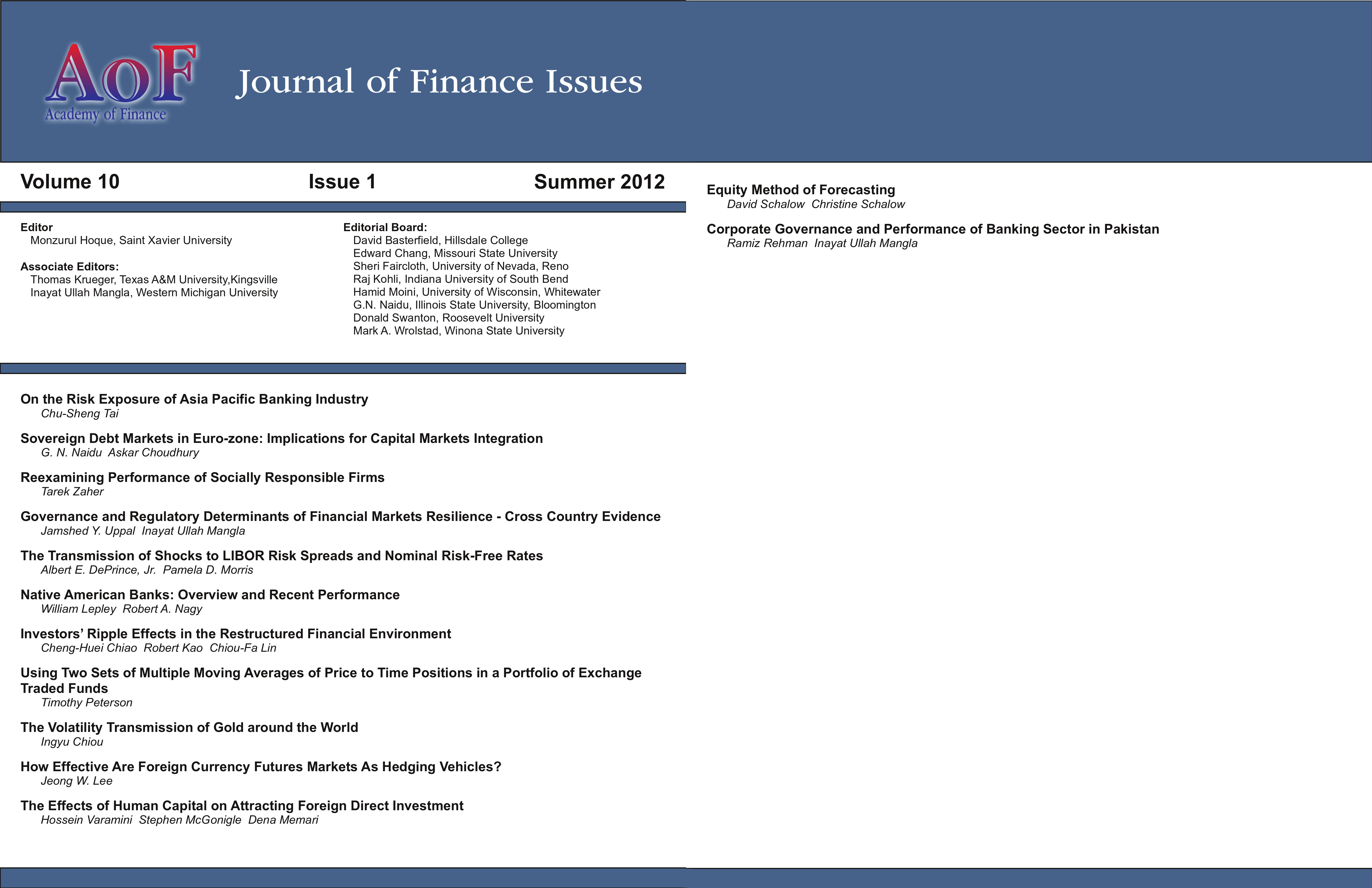Investors’ Ripple Effects in the Restructured Financial Environment
DOI:
https://doi.org/10.58886/jfi.v10i1.2320Abstract
After the burst of high-tech bubble in year 2000, many companies have been financially restructured so that they can be in a better position to deal with their debt burdens. They restructured to maintain some growth in earnings despite a decline in sales by booking the realized gains on some appreciated investments, reducing deferred revenue, revising its deferred tax asset allowance, and emphasizing on strong cash flow from operations. In this paper, we analyze the variations of key financial composite ratios to verify the structural change and investigate investors’ reactions to PE ratios in previous periods. We apply the Polynomial Distributed Lag Model to explore the existence of these investors’ financial ripple effects. These effects reflect investors’ behavior with under-reactions, over-reactions, or excessive optimism to this new financial information. The findings prove that there are different investor’s proclivities spreading across those financial ratios on both high-tech and non-high-tech companies.





